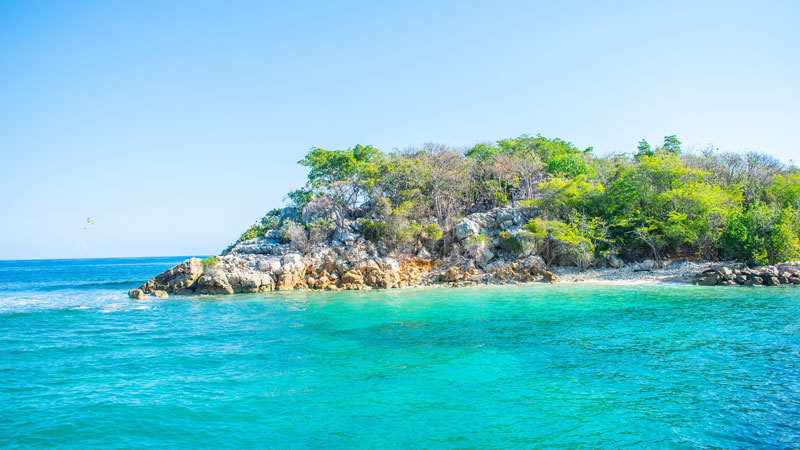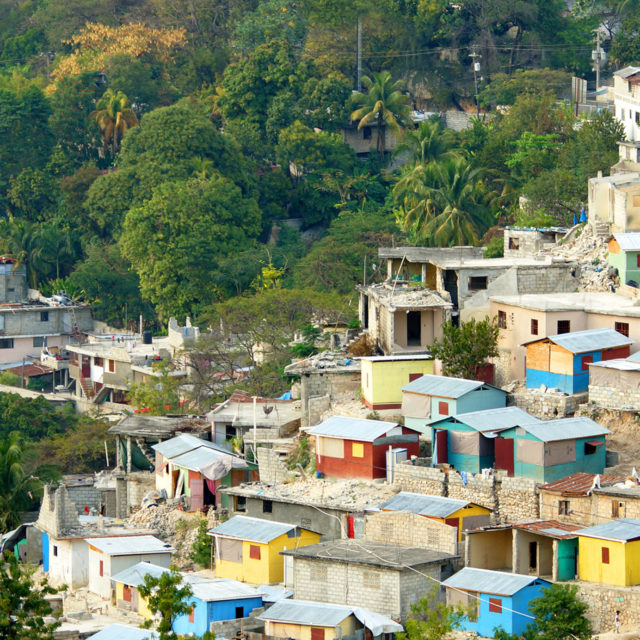No one individual can hold the title of master distiller in Haiti. Instead, the people of the island are the makers of clairin, the Caribbean republic’s native distilled cane spirit. A number of small guildives (Creole for clairin distilleries) produce the spirit specifically for domestic consumption.
Foreign drinkers might misidentify clairin as Haitian rhum agricole, but the spirit has its own complex processes and distinctions, and massive cultural significance in Haiti. As international consumers become more educated about heritage ingredients, fermentation, and terroir, clairin enthusiasts wonder if Haiti’s spirit will get the respect it’s due.
The history of clairin goes back to the 18th century. Sugar cultivation flourished in Haiti during the French colonial period due to the island’s diverse terroir and fertile soil — so fertile, in fact, that the island became the largest sugar producer in the West Indies.
Haitians revolted against the French and claimed their sovereignty as the first black independent country in 1804. The country retained certain aspects of French culture, including the sugarcane and distillation processes the French brought to Haiti. Clairin and its production, however, are specific to Haiti.
It’s said that without clairin, Haiti would not be free. This is a common sentiment felt throughout the Caribbean republic as the spirit and voodoo go hand in hand. The religious practices, fueled by swigs of clairin, sustained hope through times of persecution, enslavement, colonialism, and, now, liberty.
Consumed locally, at still strength, clairin’s cultural significance in Haiti is huge.
“Clairin is the gift you bring when you are invited to dinner, the alcohol infused with medicinal plants you drink when ill, the fuel for dancing and revelry, the sacramental liquor in voodoo rituals,” Jan Warren, portfolio specialist at La Maison & Velier, says, calling it “integral” to life on the island.

Haiti is largely mountainous with isolated fertile valleys and plateaus. Different clairin expressions celebrate the diversity of the terrain; as with wine, each bottling is slightly distinct and reflective of its terroir.
Traditional clairin is made from sugarcane that’s grown without pesticides and hand-harvested, and then pressed into juice or made into syrup. The liquid is spontaneously fermented with naturally occurring yeasts and distilled once in a pot still. Sound familiar?
If this has you thinking of rhum agricole, you’re not entirely off base. But, unlike the Martinican spirit, clairin focuses on heritage cane varieties. It also uses wild yeasts, not the proprietary ones in rhum agricole. After being fermented for no less than 120 hours, clairin is rapidly distilled on a small-batch still.
“There is room for variation in that basic formula,” Warren says. “Some producers control the pH of the fermenting sugar cane material with local fruits, some do it with dunder à la Jamaican rums, and some just rely solely on the natural yeasts and weather of Haiti to imbue their fermenting cane product with intense flavors.”
Despite the complexity of both harvesting and distillation processes, clairin is often unfairly categorized alongside all other rums.
“Rum has as many rules as there are countries of production,” Warren says. “The distinction is that the standards of identity that the TTB sets forth for ‘rum’ are disrespectful to the standards of identity laid down by the countries producing rum. For instance, ‘whiskey’ is broken down into subsets of standards of identity (Scotch whisky, Canadian whiskey, bourbon, etc.), but rum gets no such treatment. Same with ‘brandy’ (Cognac, Armagnac, Spanish brandy, etc.). Why?”
Shannon Mustipher, rum expert, spirits consultant, and author, believes clairin could speak to American drinkers and bartenders who value craft products.
“Clairin has a huge potential in the U.S. as its flavor profiles — which range from floral and fruit-driven, to dry, grassy and herbaceous, to earthy and gravelly — cannot be found in other styles of rum,” Mustipher says. “This gives bartenders who are looking to innovate and offer something special to their guests a way to do so as the trend in spirits continues to go towards premium and bars are willing to stock higher-quality products.”
In New York City, clairin is served at BlackTail cocktail bar, and restaurants Frenchette and Shoji, where it’s paired alongside a kaiseki-style dessert course.
“There is a massive interest in local, artisanal, natural, and responsibly made wine and spirits right now,” Warren adds. “Natural wine is taking off. Traditional clairin is made from cane, grown without chemicals, naturally fermented, and simply distilled using methods basically unchanged for a few hundred years.
“How can tasting a sugarcane spirit made the way sugarcane spirits were originally made not be of enormous relevance to the drinking public?”
Three Clairins to Try
Clairin Sajous
Produced in an enclave in the mountainous region of Saint Michel de l’Atalaye, this Clairin has bright green vegetable notes with an alpine finish. Average price: $40.
Clairin Vaval
Madame Meuze — the OG sugarcane of the 1600s that was brought from Asia — is grown in Cavaillon, a rural town near the beaches of Aquin. Vaval has slightly sharp vegetal flavors and a hint of salinity on the finish, evoking its coastal terroir. Average price: $40.
Clairin Le Rocher
You know that candy that your grandma keeps in a dish wrapped in primary-colored cellophane? This is Le Rocher. It’s distilled from sugarcane syrup, and its ripe tropical fruit flavors are due to the higher esters in this bottling. Average price: $40
